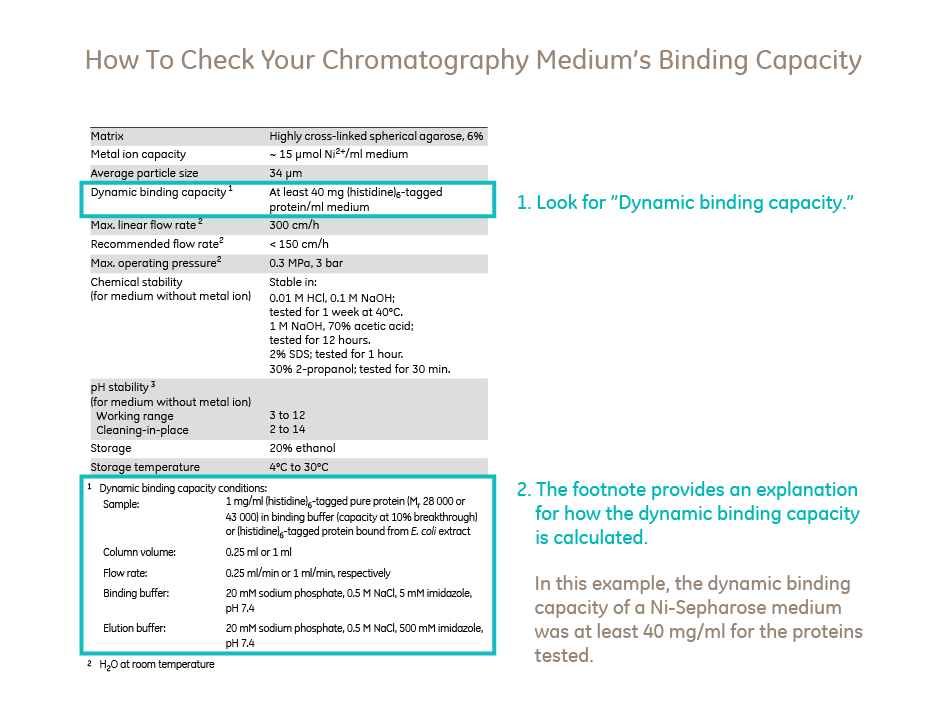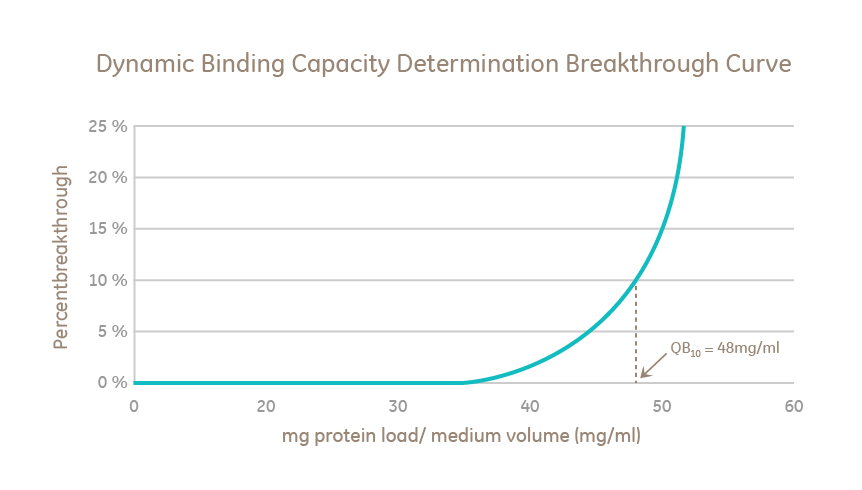The comparison between protein binding capacities of resin from different suppliers is not always straightforward. Different methods may have to be used, and often these methods are not stated directly. In this post, we will explore what protein binding capacity is, how it can be measured and what exactly to look for on a manufacturer’s specification sheet.
What is protein binding capacity?
Protein binding capacity is one of the most important characteristics to consider when choosing a resin. This parameter is critical, because it determines how much resin that is needed in order to purify a certain amount of protein. Stated another way, protein binding capacity determines how much protein that can be purified by a specific volume or mass of resin. So then a product with a higher reported binding capacity than another should be able to purify more of your protein, right? Not always.
How is protein binding capacity determined?
In order to be able to compare specifications between vendors, it is vital to have information on the conditions used to determine the binding capacity. Unfortunately, in many cases the method for obtaining the chromatography resins “binding capacity” is not stated. When inquiring about these conditions, it is worthwhile to ask about the specifics of how the vendor determined the binding capacity.
- What mode of measurement (static or dynamic) were used?
- What were the experimental conditions (pH, salt/conductivity, protein identity and concentration)?
- What are the units of measure (i.e., capacity per milliliter wet chromatography medium or per gram dry medium)?
What is static binding capacity?
The static binding capacity (SBC, also called total protein capacity) is normally measured in batch mode in a beaker. SBC is usually reported as the maximum amount of protein bound to a chromatography resin at given solvent and protein concentration conditions. In these experiments, an excess of protein is loaded to give a maximum protein binding capacity. Protein loss is often over 50%. The static binding capacity (SBC) value varies substantially depending on the specific protein that is loaded.
What is dynamic binding capacity?
Dynamic binding capacity (DBC) is the binding capacity under operating conditions (i.e., in a packed affinity chromatography column during sample application). The DBC of a chromatography resin is the amount of target protein that binds to the resin under given flow conditions before a significant breakthrough of unbound protein occurs. DBC is determined by loading a sample containing a known concentration of the target protein and monitoring the flow-through. The protein will bind to the resin to a certain break point before unbound protein will flow through the column.
Static vs dynamic capacity
With this said it can be stated that the dynamic binding capacity (DBC) is a more “true” protein capacity for the resin since it is determined under the same running conditions as a purification run, whereas the static binding capacity (SBC) is typically determined with a high protein loss and not under typical running conditions. Make sure to get dynamic binding capacity (DBC) for the resin to better understand what to expect as a result.
A breakthrough curve is generated by graphing the amount of protein loaded versus the percent breakthrough. The DBC can be determined on the breakthrough curve at a loss of, for example, 10% protein (referred to as the QB10 value).
Because the DBC is measured under operating conditions, this value provides information about the maximum amount of target protein that you can load onto your column in order to avoid unnecessary loss. In contrast, although the SBC reports the maximum protein quantity that a resin can bind, it does not state the amount of protein that failed to bind under these conditions. Therefore, you may experience substantial losses of protein to the flow-through when using SBC as a guide for loading your protein.
How to determine the binding capacity of protein
At Cytiva we measure the dynamic binding capacity. In order to obtain the DBC for a loose chromatography resin, the resin is packed into a column. Information about the DBC, how it has been determined, and the material needed can be found in most of the instruction manuals for Cytiva’s prepacked columns and loose chromatography resins.

Next: How to determine dynamic binding capacity of chromatography resins

